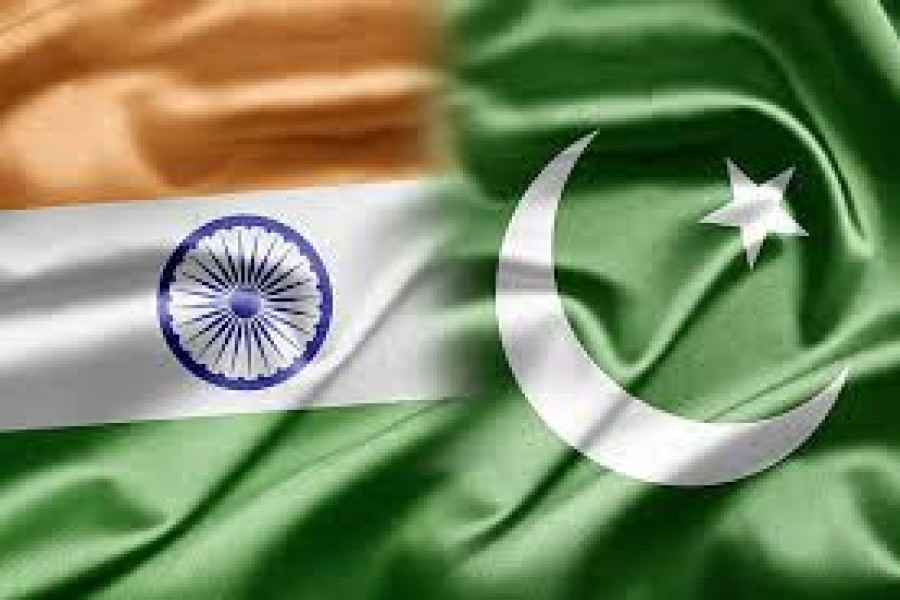
Published :
Updated :

Conventional wisdom has it that, after the Cold War ended, and particularly as India paradigmatically embraced neo-liberal reforms, it would become the leading global light of both the then-progressing democratic movement and an unfolding neo-liberal order. Of course, it was already the world's largest functional democracy, give or take the occasional hiccups (such as the 1975-77 Emergency Rule), but Manmohan Singh's bold economic brushstrokes, coinciding as it did with a vast outburst of youthful entrepreneurial charge with new technological skills virtually depicted India as a sleepy giant, like Gulliver, just beginning to wake up.
On the other hand, given the seeds sown during the 1980s, particularly to evict the Soviet Union from Afghanistan (not to neglect ending the equally uprooting Iran-Iraq war), Pakistan would increasingly become a rogue counterpart. Whether this outcome was premised upon civilian governments which could not function properly because of entrenched political rivalries (corruption, an equally damnable corrosive factor can be kept aside for now), or any military return would automatically elevate the illegitimate resort to using newly-spawned jihadists against the country's immortal enemy, India, the fact of the matter remains that Pakistan is still battling to this day against these self-perpetrated forces, with no end in sight. It has registered impressive economic growth, but long-term connection with the Arab world and China, both under stress at this very moment, accounted for that.
For an entire generation or more, it looked like India's 'righteous' route faced contestation from Pakistan's 'evil' pathway. Even Donald J. Trump has said as much in his snapshot way. It was no longer just the original conflict stemming from the 1947 Partition: Kashmir. Too many new forces had entered the equation to permit the July 1972 Simla Agreement, the July 2001 Agra Summit, and subsequent sporadic attempts at rapprochement to plant roots and become sustainable. If so, the Indian symbols of democracy and liberalism would be further enhanced against the divisive forces Pakistan was associated with (or acquired as the front-state neighbour of a Soviet-controlled Afghanistan).
Today's South Asian appraisal no longer supports those outcomes: whereas Pakistan continues to struggle against the socio-economic leftovers of the belligerent atmosphere from the 1980s (not to mention its foundational tension between civilian and military authorities), India, under Narendra Modi, has become more like Pakistan, promoting fundamentalist religious precepts, persecuting minorities, and pushing a purification campaign reminiscent of the Taliban in Afghanistan. Modi's own electoral sound-bites disguised these well, energised the youth and the extremists behind a 'Bharat' ideology, and witnessed an economic spurt built as much on patriotic expectations as on ground economic realities. Yet the force that expanded the most resolutely being Modi's showmanship globally was the same that became so institutionalised in Gujarat under his watch as Chief Minister, the one intimately related to the most vengeful riots since Partition: Hindutva.
Initially seen as a stray overextension here and there across India as India's own and equally resolute secular stance had all that it needed to sustain itself, we now notice, even as Modi's first term has not expired, how it is being institutionalised in the nooks and crevices of India. From persecuting Christians, but particularly Muslims, and brutally reinforcing caste rights and hierarchies, to wanting to rename Agra Fort and the Taj Mahal as well as hound Bangladeshis out of Assam, India's Bharatiya Janata Party (BJP) may have secured a resounding election victory in 2014, but has broken India's foundation. The obvious consequence floats clearly: Pakistan's fundamentalist elements emerging across a suddenly overcharged Hindu India.
If it is not fundamentalism that cripples India, it could be the combined effects of this upon the deep economic reforms being too rapidly imposed. Here lies the difference between Manmohan's reform-push and Modi's: the former's was too slow to quench the fast-rising expectations of a bulging upwardly-mobile population, which essentially felled his Congress Party coalition; yet it is the rapidity of Modi's fairly symmetrical reforms unsettling communities far and wide that is feeding the independent fundamentalist force. Together, they cannot hold India together, and particularly as the Indian fabric is splitting at the seams: from Tamil Nadu to the Seven Northeast Sister States, regional policies and preferences have begun diverging visibly from the centre's, evident, for example, in the protectionist West Bengal approach against the liberal central policy-making trajectory, but also stymieing the Teesta River agreement negotiations between Bangladesh and India, in turn, elevating mistrust when India's most efficient road passageway to Southeast Asia is right through Bangladesh.
One caveat is due. Central-provincial policy difference can be negotiated and dealt with sensibly, transparently, and politically through inducements. This cannot be said of political movements, particularly those that claim to have no Modi or BJP connections and instructions, that have been wreaking havoc in India's countless villages. There are too many of them for Modi alone to remedy, but also the essentially correct reply he might make that he is not responsible for the stray incidents of his extreme supporters. With an election next year, we can expect a hands-off policy approach against this force, meaning that the outcome will be decided on an up-down vote on religious nationalism, with nationalists. Cast that way, India could be splintered irrevocably, a condition Pakistan knows only too well.
Much water has flown for counter-currents to find firm footings, but not enough that India cannot be retrieved. It will take a secular crusade as committed from too many groups as the Hindutva movement, driven by a handful, has managed both so surreptitiously and brazenly. It is possible, but getting harder by the day.
Dr. Imtiaz A. Hussain is Professor & Head of the newly-built Department of Global Studies & Governance at Independent University, Bangladesh.


 For all latest news, follow The Financial Express Google News channel.
For all latest news, follow The Financial Express Google News channel.